#Lorenzo Veracini
Text
[“Criticizing US scholars for their erasure of the Indian, Mahmood Mamdani writes:
“Engaging with the native question would require questioning the ethics and the politics of the very constitution of the United States of America. It would require rethinking and reconsidering the very political project called the U.S.A. Indeed, it would call into question the self-proclaimed anticolonial identity of the U.S. Highlighting the colonial nature of the American political project would require a paradigmatic shift in the understanding of America, one necessary to think through both America’s place in the world and the task of political reform for future generations.”
Furthermore, Mamdani argues, regarding the conflation of immigration and settlement: immigrants join existing polities whereas settlers create new ones. “If Europeans in the United States were immigrants, they would have joined the existing societies in the New World. Instead they destroyed those societies and built a new one that was reinforced by later waves of settlement.” The nation of immigrants rhetoric that avoids the dynamics of settler colonialism plays a role that “is essential to settler-colonial nation-state projects such as the United States and Israel. The political project of the settler—to create and fortify the colonial nation-state—becomes obscured by the nonpolitical project of the immigrant, who merely seeks to take advantage of what the state allows every citizen.”
Historian Lorenzo Veracini also distinguishes between settlers and immigrants, asserting that settlers are unique migrants made by conquest not by immigration. Settlers are founders of political orders and carry their sovereignty with them, whereas immigrants face a political order that is already constituted. Immigrants can certainly be individually co-opted within settler-colonial societies, and often are, but they do not enjoy inherent rights and are characterized by a defining lack of sovereign entitlement.
Immigrants and refugees to the United States do have the option to resist becoming settlers, although in most cases they do not know the history of the United States or the political reality. The US Immigration and Naturalization Service policies based on exclusion make the new immigrant’s life precarious, particularly for immigrants of color entering a racial order that renders them suspect already, so they may not want to know the reality or that they have a choice and that by default they become settlers.”]
roxanne dunbar-ortiz, from not a nation of immigrants: settler colonialism, white supremacy, and a history of erasure and exclusion, 2021
118 notes
·
View notes
Text
i feel very lucky to have taken classes with k wayne yang and yen le espiritu and curtis marez at ucsd (shoutout to shelley streeby and to daphne taylor garcia whose class was conceptually by FAR the most challenging class i've ever taken in my life) but since my thesis was on the settler colonial cycle as a broadly applied strategy of white supremacy i also feel like patrick wolfe and lorenzo veracini are my best friends<3
#crosses fingers that no one from the ucsd ethnic studies dept ever googles themself and finds me here#i was so pleased to see wolfe cited in the below post that's what made me think of this
0 notes
Text
[Unitierracalifas] UT Califas fierce care ateneo, 3-25-17, 2.00-5.00 p.m.
Compañerxs,
The Universidad de la Tierra Califas' Fierce Care Ateneo will gather on Saturday, March 25, from 2.00 - 5.00 p.m. at Miss Ollie's / Swans Market (901 Washington Street, Oakland, a few blocks from the 12th Street BART station) to continue our regular, open reflection and action space to explore questions and struggles related to the emerging politics of fierce care as well as some of the questions below.
Friday, March 10 ended Native Nations Rise, a four day convergence of Indigenous peoples and allies who gathered in Washington D.C. to continue the fight against the Dakota Access Pipeline as well as the several other pipelines under construction, including the Keystone XL, Trans-Pecos, Bayou Ridge, and Dakota Access. The fight, according to Kandi Mossett, is more than against one pipeline, it's about embracing a whole new way of life —one that is sustainable and is not about taking from the earth, but giving back. It is an on-going struggle. For Mossett and others it is the continuation of a five hundred year struggle against forces that take and destroy for a lifestyle that is no longer tenable. The four days of mobilization in D.C. not only confronted the destruction of shale deposits and the pipelines that the oil industry wants to use to maintain a toxic lifestyle, but also advanced a recognition that we must reclaim and invent a new, sustainable way of living. (see, Jaffe, "Next Steps in the Battle Against the Dakota Access and Keystone Pipelines")
More and more we are reminded that Indigenous communities are on the front lines of struggle. They are often the first line of defense against the rapacious and destructive extractive industries. It is this battle line that also signals that the U.S. is a settler colonial nation and as such has been and remains committed to erasing Indigenous people. The most recent persecution against the Standing Rock Sioux and others at the DAPL has made sacred site water protectors into targets of the most advanced militarized police repression, deploying sophisticated weaponry, infiltration, and surveillance while also criminalizing sacred-site water protectors in the mainstream media. The assault on Indigenous nations underscores the most critical element of settler colonialism, that is, according to Patrick Wolfe, it is "a structure, not an event." (see, Wolfe, "Settler Colonialism and the Elimination of the Native") J. Kehaulani Kauanui takes up Wolfe's argument to point to an "enduring indigeneity" that operates dialectically as Indigenous peoples resist all elimination efforts, and at the same time as the settler colonial structure continues into the present to "hold out" against indigeneity. (See, J. Kehaulani Kauanui, "A Structure, Not an Event.") For both Wolfe and Kauanui, Palestine is the most recent site of a violent settler colonialism advanced by a U.S. backed Zionism. To this we would add Indian-occupied Kashmir, of which Omar Bashir recently noted, "India only wants Kashmir, not its people," thus naming the settler colonial logic with its concomitant operations of elimination and containment. (see, Bashir, "India Only Wants Kashmir, Not Its People")
More recently, Lorenzo Veracini has taken up Wolfe's intervention and also asserted that both the Indigenous and non-Indigenous are now being treated roughly the same —that is as disposable people. "The working poor are growing in number almost everywhere," warns Veracini. "Like Indigenous peoples facing a settler colonial onslaught, the 'expelled' are marked as worthless. The 'systemic transformation' produces modalities of domination that look like setter colonialism." In other words, more and more people are treated as disposable and the system would prefer to eliminate them rather than convert them into exploitable labor. (see, Veracini, "Settler Colonialism's Return")
From the Zapatistas to the several battle lines against pipelines across the U.S. and other battle fronts occupied by Indigenous communities across the globe, they are at the fore front of disrupting capitalism. But, it's not the capital(ism) we originally battled against. Or, at least, our understanding of capitalism has shifted, because capitalism has reached its final crisis. There are two clear areas of analysis that more recently have exposed its limits. First, capitalism no longer has access to an inexhaustible or "cheap nature." According to Jason Moore "capitalism is historically coherent —if 'vast but weak'— from the long sixteenth century; co-produced by a 'law of value' that is a 'law' of Cheap Nature. At the core of this law is the ongoing, radically expansive, and relentlessly innovative quest to turn work/energy of the biosphere into capital (value-in-motion)." (Moore, Capitalism in the Web of Life, p. 14)
Robert Kurz, and the wertkritik school that has been built around his work, is the second line of thought that recognizes capitalism is not just in yet another cyclical crisis but is nearing the limits of its internal contradiction. Kurz has taken to task the different approaches to Marx for their inability to extend Marx's critique of political economy and account for both the excesses and limits of commodity society. "Kurz, on the basis of a thoroughgoing reading of Marx," asserts Anselm Jappe, "maintained that the basic categories of the capitalist mode of production are currently losing their dynamism and have reached their 'historical limit': mankind no longer produces enough 'value.'" (see, Jappe, "Kurz: A Journey into Capitalism's Heart of Darkness," p. 397) The crucial point made by Kurz and elaborated by Jappe is that capitalism is not eternal, nor are the specific elements of capitalism, i.e., abstract labor, value, commodity, and money, timeless. "The structural mass of unemployment (other typical phenomena are dumping-wages, social welfare, people living in dumps, and related forms of destitution) indicates that the compensating historical expansionary movement of capital has come to a standstill." (see, Kurz, "Against Labour, Against Capital: Marx 2000") Kurz admonishes against mis-using Marx's categories and falling into a positivistic trap. A more complete reading and extension of Marx's insights reveal that commodity, value, and labor are not ontological, "transhistorical conditions of human existence." As much as they are neither eternal or timeless, they likewise have a history. "The appearance of labor as the substance of value is real and objective, but it is real and objective only within the modern commodity-producing system." Jappe explains,"Kurz always asserted that capitalism was disappearing along with its old adversaries, notably the workers' movement and its intellectuals who completely internalised labour and value and never looked beyond the 'integration' of workers —followed by other 'lesser' groups— into commodity society,"
Both Moore and Kurz invite us to interrogate the myth of capitalism as a never-ending system and to recognize that it has reached its limit. It can not overcome its internal contradictions given that it can no longer exploit cheap nature. But, if capitalism is gasping its last what does this mean for race and racial formations that were long believed to be essential to managing capitalism's most exploitative functions, i.e. producing surplus value via tightly controlled labor made more malleable through a brutal racial hierarchy of violent control? Does the end of capitalism signal an abandonment of the several intersecting racial regimes that helped insure its reproduction? "Race," Wolfe insists, "is colonialism speaking, in idioms whose diversity reflects the variety of unequal relationships into which Europeans have co-opted conquered populations." For Wolfe,"different racialising practices seek to maintain population-specific modes of colonial domination through time," (see, Wolfe, "Introduction," Traces of History, p. 5; 10) If settler colonialism endures as a structure that attempts to produce populations as disposable, how are we to understand this in relation to labor and race in the current moment?
Is disposability a condition of capital in its final stage or a new racial regime? "Disposability manifests," Martha Biondi reminds us, "in our larger society's apparent acceptance of high rates of premature death of young African Americans and Latinos." It is not only the school to prison pipeline, structural unemployment, and "high rates of shooting deaths" that produce disposability. (quoted in Keeanga-Yamahtta Taylor, From #Blacklivesmatter to Black Liberation, p. 16) It is also the way we think about water, health, and collective ways of being.
Indigenous struggles and the Black and Brown working class are and have been refusing disposability. This can be heard in the adamant battle cry proclaiming, Black lives matter! and also in the stands taken across the globe by Indigenous people and their supporters to protect the earth. Disposibility as a technology and extractivism as an operation are imbricated and proceed in violent unison as capital enters a new phase. Disposibility is marked by settler colonialism's "drive to elimination...[a] system of winner-take-all;" extractivism follows its own mandate of total depletion of all resources, also a system of grabbing everything. (Kauanui and Wolfe, "Settler Colonialism Then and Now")
Raul Zibechi analyzes the extractivist model as a new form of neoliberalism: "extractivism creates a dramatic situation —you might call it a campo without campesinos— because one part of the population is rendered useless by no longer being involved in production, by no longer being necessary to produce commodities." For Zibechi, "the extractivist model tends to generate a society without subjects. This is because there cannot be subjects within a scorched-earth model such as extractivism. There can only be objects." (see, Zibechi, "Extractivism creates a society without subjects") What does care look like at the end of capitalism? When we are longer bound by the relations of a commodity society?
South and North Bay Crew
NB: If you are not already signed-up and would like to stay connected with the emerging Universidad de la Tierra Califas community please feel free to subscribe to the Universidad de la Tierra Califas listserve at the following url <https://lists.resist.ca/cgibin/mailman/listinfo/unitierraca lifas>. Also, if you would like to review previous ateneo announcements and summaries please check out UT Califas web page. Additional information on the ateneo in general can be found at: <http://ccra.mitotedigital.org /ateneo>. Find us on tumblr at <https://uni-tierra-califas.tumblr.com>. Also follow us on twitter: @UTCalifas. Please note we will be shifting our schedule so that the Democracy Ateneo (San Jose) will convene on the fourth Saturday of every even month. The opposite, or odd month, will be reserved for the Fierce Care Ateneo (Oakland). In this way, we are making every effort to maintain an open, consistent space of insurgent learning and convivial research that covers both sides of the Bay.
--
Center for Convivial Research at Autonomy
http://ggg.vostan.net/ccra/#1
#Universidad de la Tierra Califas#Fierce Care Ateneo#Oakland#settler colonialism#Lorenzo Veracini#J. Kehaulani Kauanui#Patrick Wolfe#UniTierra Califas#UTC
1 note
·
View note
Video
youtube
Τριπ με το ποδήλατο Στις 16 Απριλίου του 1943, ο ελβετός χημικός Άλμπερτ Χόφμαν πειραματιζόταν στο εργαστήριό του με διαιθυλαμίδιο του λυσεργικού οξέος, μια ουσία που είχε παρασκευάσει ο ίδιος από τον μύκητα ερυσίβη (Claviceps purpurea) τον Νοέμβριο του 1938, για λογαριασμό φαρμακευτικής εταιρίας, στο πλαίσιο ενός προγράμματος για τη φαρμακευτική χρήση των βοτάνων.
#animation#Claviceps purpurea#Connie Littlefield#Άλμπερτ Χόφμαν#Άλντους Χάξλεϊ#Γιώργος Τσακνιάς#Ραμ Ντας#Στανίσλαβ Γκροφ#Τίμοθι Λίρι#Lorenzo Veracini#LSD#Marco Avoletta#Nandini Nambiar
1 note
·
View note
Link
"Undoing settler colonialism would require finally interrupting the logic of Indigenous elimination. A state built on this logic would need to be completely reorganized. There is a growing body of international experience regarding this transformation. New Zealand and South Africa, for example, began enacting similar processes in the 1990s. The sky has not fallen in either country."
3 notes
·
View notes
Video
Albert Hofman 1943 - A bicycle trip. 2d animation by Lorenzo Veracini, Nandini Nambiar and Marco Avoletta / edited by Datagrama Visuals. https://www.instagram.com/p/B193w6iBCwz/?igshid=1fisccnwuebox
2 notes
·
View notes
Text
Susan Slyomovics and Lorenzo Veracini (eds.), Race, Place, Trace: Essays in Honour of Patrick Wolfe – Verso, February 2022
Susan Slyomovics and Lorenzo Veracini (eds.), Race, Place, Trace: Essays in Honour of Patrick Wolfe – Verso, February 2022
Susan Slyomovics and Lorenzo Veracini (eds.), Race, Place, Trace: Essays in Honour of Patrick Wolfe – Verso, February 2022
This edited collection celebrates Patrick Wolfe’s contribution to the study and critique of settler colonialism as a distinct mode of domination. The book emphasises Wolfe’s militant and interdisciplinary scholarship, together with his determination to acknowledge Indigenous…
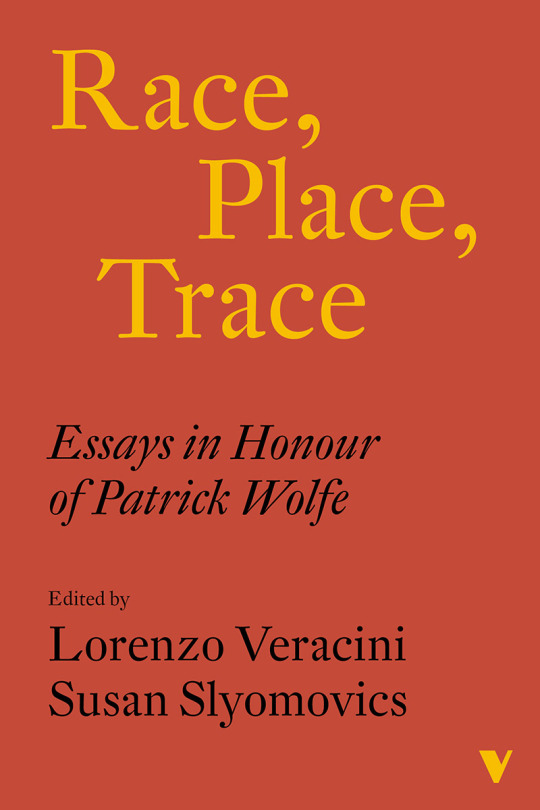
View On WordPress
0 notes
Photo
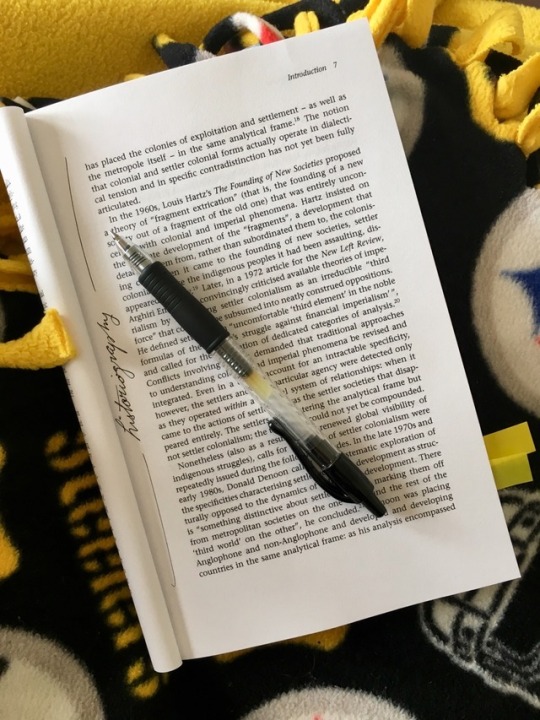
Day 1/100 Settlers and Steelers Kicking off 100 days of productivity with Lorenzo Veracini’s Settler Colonialism: A Theoretical Overview and my favorite throw blanket! I thought the 100 days challenge would provide accountability to my summer reading list and for the course I’m taking.
#100 days of productivity#history phd#phd student#phd life#gradblr#grad student#grad school#studyblr#studyspo#steelers#history student
5 notes
·
View notes
Text
Fervor napolitano

[Felix Rienth y Muriel Rochat Rienth. La foto es de Pablo F. Juárez]
La Tempesta Basel, el conjunto del tenor Felix Rienth y la flautista Muriel Rochat Rienth, se sumerge en el fascinante mundo de las cantatas y la música de cámara del Nápoles barroco
El tenor Felix Rienth, acompañado una vez más por La Tempesta Basel, el conjunto que dirige su esposa, la flautista Muriel Rochat Rienth, creado hace ya diez años, vuelve a un sello español. Si hace un lustro grabaron en Enchiriadis un trabajo con música de Telemann, esta vez es en Vanitas, la marca del clavecinista manchego Andrés Alberto Gómez, donde han dejado un recorrido por música napolitana de principios del siglo XVIII, un momento de extraordinaria efervescencia en la capital del sur de Italia.
En Vanitas, la flautista suiza había dejado ya un par de álbumes con las Fantasías de Telemann y Sonatas de Haendel, en la que la acompañaba al clave el propio Gómez. "La experiencia de Muriel nos vino muy bien. Estamos muy satisfechos de haber podido encontrar un sello como Vanitas, de gran calidad y buena distribución internacional, con su excelente técnico de sonido, Pascual Lorenzo, y un editor de mucha confianza como Andrés Alberto Gómez". "Además –añade Muriel– el CD va acompañado de un ilustrativo texto de Eduardo Torrico, con el que habíamos colaborado ya en nuestro primer CD, dedicado a Pepusch, hace justamente 10 años. Estamos muy contentos de poder celebrar ahora esos diez años de nuestro grupo con este disco, que es el tercero en este tiempo. Las magníficas fotos de Pablo F. Juárez nos han permitido a Felix y a mí aparecer directamente en la portada, lo que le da al CD cierto aire de disco de aniversario".
Para Felix es su "primer disco en italiano, y comparando con el último que hice con nuestro grupo, dedicado a cantatas religiosas de Telemann, este es ya completamente secular, incluso operístico, pues por ejemplo hago una cantata de Hasse, compositor alemán del barroco tardío, justamente afamado por sus óperas de estilo italiano. Quiero decir que estas cantatas, tratando todas de penas de amor, engaños, celos amorosos, etc. llevan una música muy expresiva, que te da muchas posibilidades interpretativas como cantante, pudiendo emplear diferentes colores vocales. Los recitativos son muy dramáticos, incluyendo los lamentos típicos del repertorio italiano. Nada que ver con la austeridad necesaria en el repertorio religioso alemán que suelo cantar en los grandes oratorios, como los de Bach. Otro gran reto supuso interpretar la cantata inédita de Fischietti, que estrenamos en concierto hace unos años. Fischietti emplea el conjunto de cámara de manera casi orquestal, como si se tratara de una gran ópera barroca".
"De hecho –continúa la flautista– construimos este programa alrededor de esta cantata de Fischietti, a la que añadimos luego a Scarlatti, Sarro, Fago, Hasse y Mancini, con dos sonatas virtuosísimas para flauta dulce, encontrándonos de repente en un verdadero paseo musical por la ciudad de Nápoles durante la época barroca". El hallazgo de la obra de Fischietti se debió al clavecinista del grupo Norberto Broggini. Así lo cuenta el tenor: "Nos preguntó si nos interesaba hacer una cantata nunca tocada, de Giovanni Fischietti que había encontrado en una biblioteca privada. A partir de los facsímiles fotografiados por Norberto, Muriel misma hizo una transcripción de la partitura, que estrenamos en un concierto en 2012. Y ahora finalmente la hemos llevado al disco".
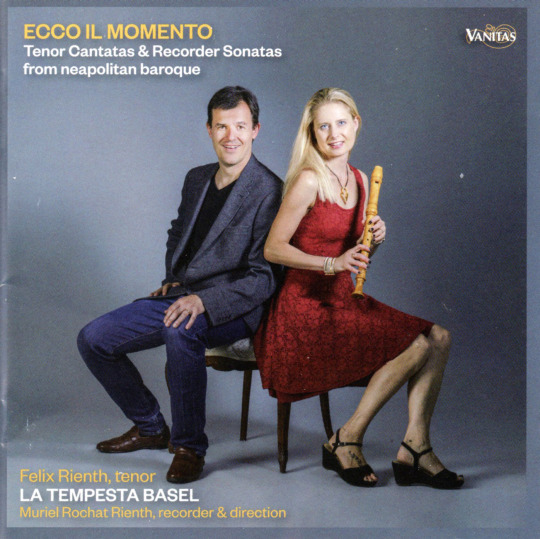
Según Muriel Rochat, "el barroco napolitano destaca sobre todo por la influencia que ejerció en el campo de la ópera, pero fue menos característico en lo instrumental. No hay que olvidar que en Nápoles había cuatro conservatorios, de los que salieron muchos de los más famosos cantantes de ópera de la época, sobre todo castrati, como Caffarelli o Farinelli. La escuela napolitana se caracteriza por su creación del barroco tardío y de la música preclásica. La cantata de Hasse que canta Felix ya recuerda un poco al estilo de Mozart. Mozart y Gluck estuvieron muy influidos por la escuela napolitana. El Teatro San Carlo fue durante años el más importante del mundo, y se inauguró precisamente con una ópera de Domenico Sarro, compositor con el que empezamos nuestro disco".
El tenor hispanosuizo confirma la dificultad vocal de las obras: "En general, la tesitura de estas cantatas es bastante aguda. Incluyen además muchas coloraturas, que no son empleadas como elementos de adorno o de dulzura, sino todo lo contrario, con mucha expresividad y fuego interno, por lo cual no se pueden cantar a lo ligero. Al final depende por supuesto del texto, pero el carácter es más bien violento, con momentos de mucha fuerza dramática y explosiva. Hay muchos saltos interválicos, especialmente en la cantata de Fischietti, y recitativos muy amplios, lo que justamente recuerda a la ópera. En cualquier caso, como no deja de ser música de cámara, escrita para un cantante, flauta y bajo continuo, por supuesto no hay que pasarse... Digamos que estas cantatas son como óperas en miniatura, con su recitativo, su aria principal, otro recitativo y el aria final. Y, desde luego, el papel de los instrumentistas es el de una orquesta".
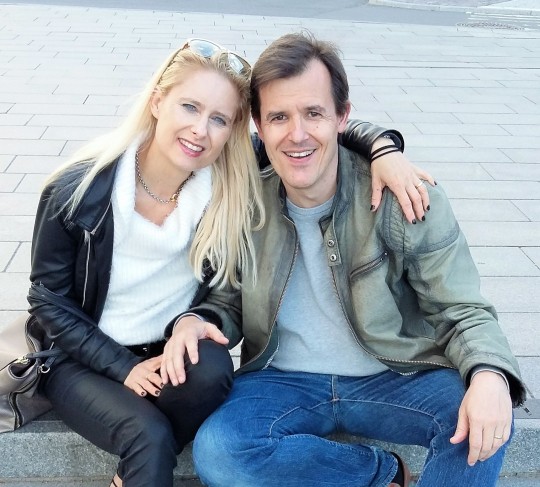
[Felix y Muriel son pareja artística y sentimental. La foto es de su hija Regina Rienth]
Muriel Rochat prefiere "en general el repertorio original para flauta dulce. Hay tanto para mi instrumento que no me fascinan las adaptaciones. Por eso quedé muy contenta con estas sonatas de Mancini, que son muy virtuosas; recuerdan un tanto a los conciertos de Vivaldi. En las cantatas, la flauta tiene también gran protagonismo, especialmente en Ardo e ver de Scarlatti, que es un diálogo entre el tenor y la flauta". Por eso no se ve haciendo arreglos de grandes obras del repertorio (Cuatro estaciones, Suites de Bach) como han hecho algunos colegas: "Hay tantas cosas que me interesan más... Por ejemplo, acabo de descubrir a Veracini y he empezado a grabar la integral de sus Sonatas, que son 12, y publicaré también en Vanitas. Hacer adornos y variaciones o acelerar los tiempos, buscando un toque más virtuosístico, me supone ya una enorme satisfacción. Y me gustan mucho las obras recién escritas, música de hoy día, que vayan bien para la flauta y la hagan lucir. De todos modos, lo que he publicado en disco hasta ahora es mi música favorita: las sonatas de Haendel y de Telemann, sus fantasías. También me fascina la música más tardía, nada típica para la flauta dulce, pero original. Por ejemplo hay un concierto de Anton Eberl, un músico del tiempo de Haydn, monísimo, o la Suite para flauta dulce y orquesta del británico Gordon Jacob, contemporáneo de Britten, que es una maravilla para mi instrumento, ya que requiere algo más que mero virtuosismo. Ahí la flauta llega a sonar como un clarinete".
Felix dice haberse aficionado ahora al repertorio italiano: "En mayo de 2020 saldrá mi próximo CD en Vanitas, que será un recital de arias y canciones para tenor y guitarra de Mauro Giuliani". Mientras, el tenor continúa con sus colaboraciones con distintas formaciones: "Suelo cantar en los grandes oratorios con orquesta de Bach, Mendelssohn, Haydn, Mozart, Schubert... tanto en Suiza como fuera. Hice por ejemplo el Requiem de Mozart con la Orquesta del Mozarteum de Salzburgo, el Lobgesang de Mendelssohn en Colonia, su Elías en Lisboa, la Pasión según San Juan con Frans Brüggen en Holanda o La canción de la tierra de Mahler con la Orquesta de Baleares en Palma de Mallorca".
Aunque La Tempesta Basel ha actuado ya en muchos países europeos, incluida España ("estuvimos en Ronda hace unos años"), confían en que este nuevo disco les permita ampliar su agenda de conciertos. Al fin y al cabo es para lo que ahora se hacen los discos, pues "los programadores sólo te toman en serio si puedes presentarte con una discografía ya detrás".
[Diario de Sevilla. 2-12-2019]
EL CD EN SPOTIFY
#la tempesta basel#felix rienth#muriel rochat rienth#norberto broggini#domenico sarro#francesco mancinni#johann adolph hasse#alessandro scarlatti#nicola fago#giovanni fischietti#haydn#mozart#mendelssohn#schubert#bach#pepusch#haendel#telemann#eduardo torrico#frns brüggen#anton eberl#gordon jacob#música#music
0 notes
Text
[“Furthermore, Mamdani argues, regarding the conflation of immigration and settlement: immigrants join existing polities whereas settlers create new ones. “If Europeans in the United States were immigrants, they would have joined the existing societies in the New World. Instead they destroyed those societies and built a new one that was reinforced by later waves of settlement.”
The nation of immigrants rhetoric that avoids the dynamics of settler colonialism plays a role that “is essential to settler-colonial nation-state projects such as the United States and Israel. The political project of the settler—to create and fortify the colonial nation-state—becomes obscured by the nonpolitical project of the immigrant, who merely seeks to take advantage of what the state allows every citizen.”
Historian Lorenzo Veracini also distinguishes between settlers and immigrants, asserting that settlers are unique migrants made by conquest not by immigration. Settlers are founders of political orders and carry their sovereignty with them, whereas immigrants face a political order that is already constituted. Immigrants can certainly be individually co-opted within settler-colonial societies, and often are, but they do not enjoy inherent rights and are characterized by a defining lack of sovereign entitlement.
Immigrants and refugees to the United States do have the option to resist becoming settlers, although in most cases they do not know the history of the United States or the political reality. The US Immigration and Naturalization Service policies based on exclusion make the new immigrant’s life precarious, particularly for immigrants of color entering a racial order that renders them suspect already, so they may not want to know the reality or that they have a choice and that by default they become settlers.”]
roxanne dunbar-ortiz, from not a nation of immigrants: settler colonialism, white supremacy, and a history of erasure and exclusion, 2021
88 notes
·
View notes
Photo
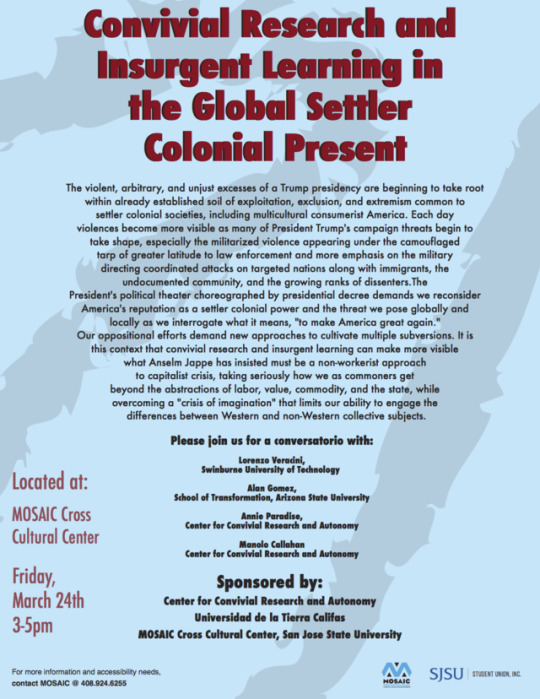
#convivial research#insurgent learning#settler colonialism#lorenzo veracini#alan gomez#annie paradise#manolo callahan#ccra#unitierra califas#center for convivial research and autonomy
0 notes
Text
I love interlibrary loan so much, and I want to stress that this isn’t just an *monocle twirl* Academic Library ThingTM. The interlibrary loan article I just got was from my local public library, whose interlibrary loan’s services are funded through taxpayer dollars, so there’s no charge to you if you want to order say...
“District 9 and Avatar: Science Fiction and Settler Colonialism” by Lorenzo Veracini from the Journal of Intercultural Studies.
NO YOU READ SCHOLARLY ARTICLES ABOUT SCIENCE FICTION IN YOUR SPARE TIME. I DIDN’T USE MY BREAK TIME AT WORK TO READ AN ANALYSIS ABOUT GODZILLA MOVIES AS A LITMUS TEST OF THE JAPAN/U.S. RELATIONSHIP! YOU CAN’T PROVE THAT! CITATION NEEDED!
17 notes
·
View notes
Text
Education For Ministry and the Dilemma of Settler Colonialism
Part 1: Background
I am simultaneously enrolled in Education for Ministry (EFM) (1), the Moray Langague Centre’s distance-learning Gaelic immersion programme, and a cultural tour of New Zealand. These three circumstances interact powerfully with my framing of who I am, a framing that starts with my self-declaration as, firstly, a follower of Christ Jesus; and secondly, as a Gael and therefore a spiritual person rooted in the land, this land of Alberta, a “treaty person” reflecting Canada’s Truth and Reconciliation declaration that we are all treaty peoples (2).The first year of EFM covers the Old Testament beginning with the pentateuch, which recounts the Israelites’ understanding of their entitlement to the land of Canaan, and their invasion and their relationships with the indiginous peoples of Canaan. The pentateuch is primarily concerned with the risks to the invading people, of contamination by the indiginous culture. The indiginous culture is variously to be addressed by genocidal massacres[3], cultural genocide through subjection[4], and apartheid that keeps the indiginous culture in its place[5], separate from the sacred colonialists, according to different passages of the source. Yet at the same time, the pentateuch demands justice and equitable treatment for the “alien and stranger”[6] who will inevitably include the surviving members of indiginous Canaanite culture. Mainstream Christian thought recognizes genocide and apartheid as evil acts while still accepting the pentateuch as foundational Holy Scripture. We look at the ways in which we have participated in and benefited from colonialism, most notably by the complicity of local vicars in the Highland clearances and Irish famine and other attrocities of the colonial era, in our sponsorship of evangelistic missions to indiginous populations that have syncretically pushed western cultural norms and in our involvement in the assimilation agenda of the residential schools, and we confess our guilt. We recognize the same guilt in the actions of Moses and Joshua and their army, and struggle with the Bible’s apparent glorification of it. Gaelic is my heritage language and was passed down through family and community along with all its attendant culture and values for countless generations, excepting only my father’s generation. In learning Gaelic I am reconnecting with my birthright, and in that process engaging with the Gaels’ identity as indiginous people of the Hebrides and with their formative experiences as conquered, invaded, and “cleared” people who became refugee- migrants on the shores of the USA, Canada, Australia and New Zealand. The repertoire of British colonial cultural genocide -- residential schools, language shaming, outlawing of cultural symbols, appropriation and revision of cultural affects -- was prototyped upon the Gaels before being refined for use against First Nations in the “new world”. But unlike those First Nations, as migrant-refugees the Gaels also became pawns in the politics of settler colonialism. They were not themselves colonialists: colonialism is exogenous domination (7). Domination requires agency. In the “new world” the cleared Gaels continued to be shamed and subordinated by the “British” -- actually, English -- colonial system that had driven them from their homeland. Back in that homeland, English efforts at forced assimilation were succeeding: a new class was emerging of client-bureaucrats with Gaelic names and physiognomy but English loyalties and a dearth of Gaelic values. These assimilated Gaels came to Canada as government, church and business factors, and were entrusted with recreating the circumstances of their own assimilation in the colonial governments’ anti-Indian agenda. To the cleared Gaels, these factors looked and sounded like ‘one of us’; but their contempt for the First Nations on whom the cleared Gaels had relied for support and their coincidental attacks of Gaelic language and culture, left the cleared Gaels in troubing ambiguity. The colonial government’s assimilation agenda which so brutally targetted the First Nations also applied to Gaels, who were shamed for using their own language and whose cultural affects were denigrated in contrast to the appropriated, anglicized form of the same affects (notably the kilt, “Scottish” dancing, and piping.) In Canada, the Reconciliation process has been framed as a dialogue between First Nations, and Settler-Colonialists. The assimilated “Scottish-Canadians” easily identify their role in this dialogue: their physcical appearance is undistinguished from the masters of Bloor Street and Parliament Hill, and they have increasingly enjoyed the unequitable material benefits of colonialism. The Gaels who have retained their family stories of being “cleared” off their own ancestral land -- land that they did not “own” in the English sense, but into which their roots had grown down for millenia -- similarly benefited from colonialism and stand cast alongside the colonialists. Their greatest benefit has been land into which to settle their torn-up roots, to love and pass down to their children as they would have passed their bare little crofts from which they were cleared; land from which, the colonial government told them, they could never be cleared. At the same, they understand themselves as the “indiginous people” of the Hebridean islands and adjacent highlands, and recognize the indiginous experience of being “cleared” off the land onto reservations as a parallel of their own tragic ancestral story; and they sympathize deeply with First Nations’ plaint against colonialism. But any sympathy is mixed equally with dread. Does recognizing a First Nation’s prior claim to the land mean that we must stop loving the land? Does it mean we must be willing to rip our roots again out of the soil that has received them? Will we be “cleared” again and if so, where will our children go? to the degree that simultaneously heart-felt sympathy with the First Nations who have that stand between and astride the disenfranchised indiginous experience having lost access to their ancestral lands, and the settler experience having immensely benefited from colonialism. But unlike Canada’s indiginous people, the Gaels have no distinctive appearance that identifies them as different from the colonial English. As Gaels have lost their language and culture, they have Here is profound irony: to achieve the just sharing of the land that is consistent with our cultural values, we require that the treaties signed by the colonial power be fulfilled according to a just and equitable interpretation of the treaties. And the social power to lobby for just fulfillment of the treaties, comes at the price of surrendering the very culture that drives us to seek a just sharing of the land.In Aoteara New Zealand, Maori and Paheka (non-Maori) present their country to visitors as a partnership between two cultures with an agenda of co-operative coexistance. Historical unbalances beween British colonialism and Maori are well attested and include land siezures, disenfranchisement, treaty violations and theft of cultural artifacts. But the original Maori treaty shows a far higher level of mutuality than, for example, the Canadian numbered treaties; and significant Maori representation in government and professions occurred markedly earlier in Aoteara New Zealand history than in Canadian history. Furthermore, a gradual but ongoing practice of restoration can be observed, both of lands and of cultural artifiacts. Maori language (and hence culture) is endangered, but its danger is not so dire as that of either Canadian First Nations language, or of Scottish Gaelic. As members of settler culture, Canadian Gaels will benefit from emulating New Zealand settler practices of respecting their Maori neighbours and restoring Maori property. As members of a remnant displaced indiginous population, Canadian Gaels will benefit from emulating Maori resilience to colonialism.
(1)Education for Ministry (EfM) is a unique four-year distance learning certificate program in theological education based upon small-group study and practice. http://efm.sewanee.edu/
(2) TRC Commission of Canada (2015). Honouring the Truth, Reconciling for the Future; Summary of the Final Report of the Truth and Reconciliation Commission of Canada. Library and Archives Canada. pp. 7-12, quoted in Calgary Aboriginal Urban Affairs Committee (CAUAC) (2016) White Goose Flying http://www.calgary.ca/CSPS/CNS/Documents/CAUAC/White-Goose-Flying-Calls-to-Action-CAUAC.pdf
[3]Numbers 33:50-56, Deuteronomy 7:1-5 &16-26, 20:16-18, 25:19, Joshua 11:12-15, 15:1-6 and other passages
[4]Joshua 9:27, Judges 1:27-28&35,
[5]Judges 1:29-34
[6] Deuteronomy 10:19
(7) Lorenzo Veracini (2011) Introducing, Settler Colonial Studies, 1:1, 1, DOI: 10.1080/2201473X.2011.10648799
0 notes
Video
vimeo
A bicycle trip (Short-film 2007) from lorenzo veracini on Vimeo.
0 notes
Text
Reconciliation in Australia
ESSAY QUESTION
Early this semester we looked at two theoretical works: Benedict Anderson’s deliberation on the ‘nation’ in Imagined Communities, and Lorenzo Veracini’s theorisation of ‘settler colonialism’. In what ways might it be said that the Reconciliation era, and the years sine then, constitute various ‘imaginings’ of the settler nation? Reflecting on Veracini’s ‘formula’ for…
View On WordPress
0 notes
Video
youtube
A Bicycle Trip
On August 16, 1943, Swiss chemist Albert Hofmann was synthetizing a new compound called lysergic acid diethylamide-25 when he got a couple of drops on his finger. The chemical, later known worldwide as LSD, absorbed into his system and soon after he experienced an intense state of altered consciousness. In other words, he tripped.
Intrigued by the experience, Hofmann dosed himself with 250 micrograms of LSD and then biked his way home through the streets of Basel, making him the first person ever to intentionally drop acid. The event was later commemorated by psychonauts and LSD enthusiasts as “Bicycle Day.”
#LSD#Albert Hofman#Basel#Bicycle Day#Lorenzo Veracini#Nandini Nambiar#Marco Avoletta#Centro Sperimentale di Cinematografia#O'zittre nicht mein lieber sohn#Mozart#Roberto Boarini
0 notes